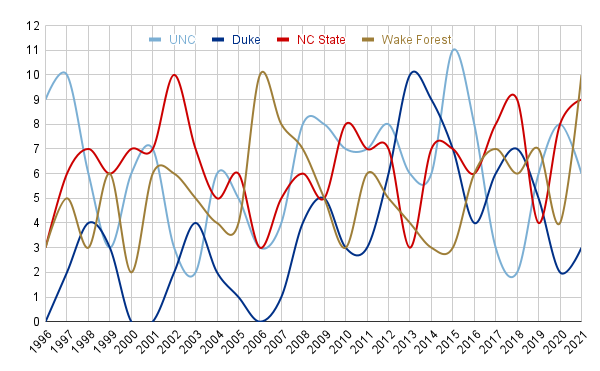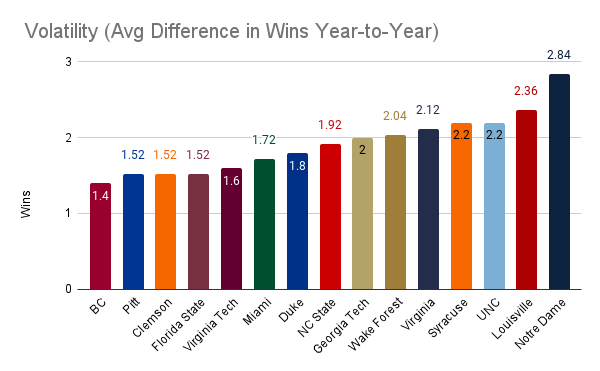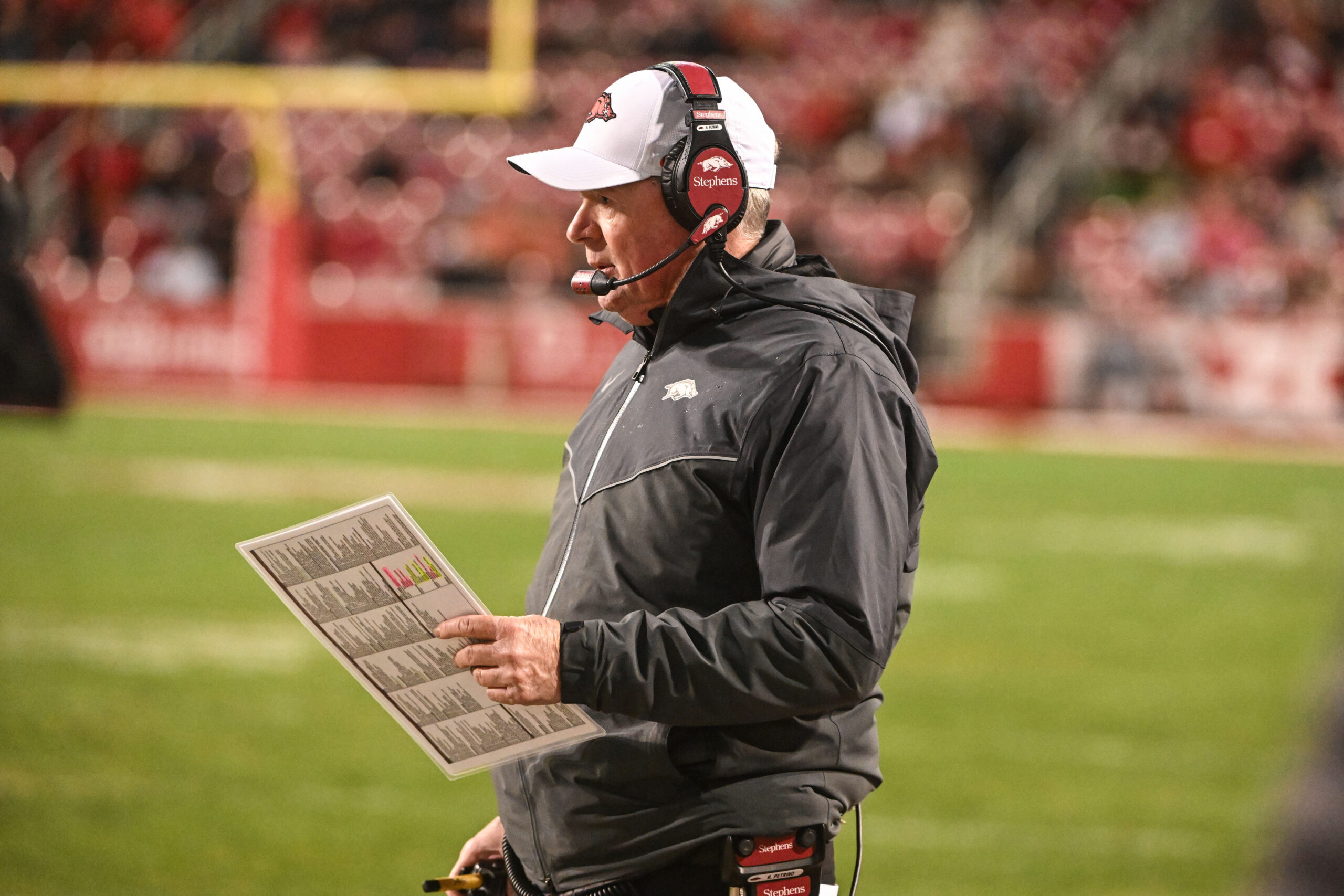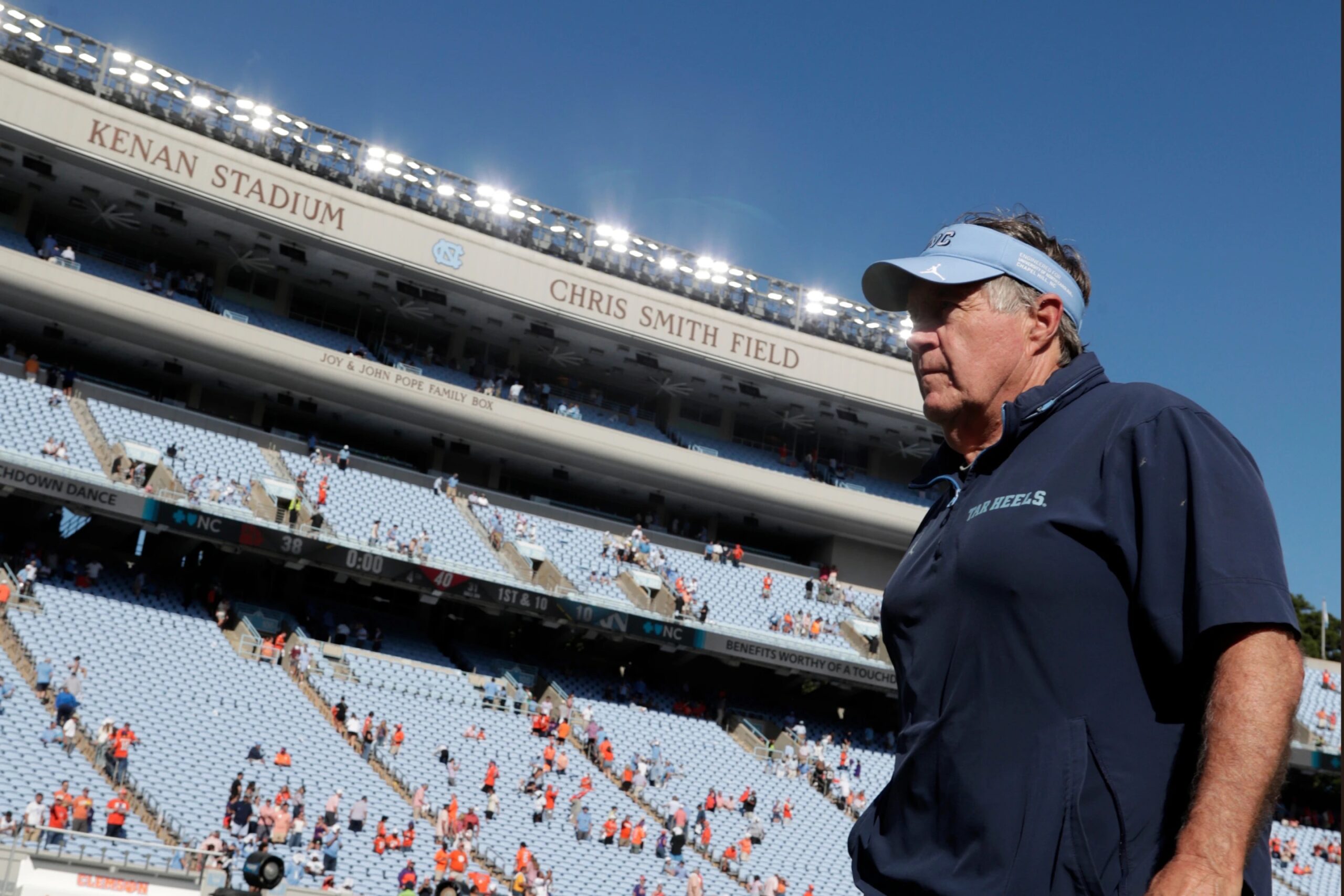Another ACC football season has come and gone, and it may be one the conference would like to forget. Clemson and North Carolina both began the season ranked in the AP Top 10, but neither ended up there by season’s end. The Tigers felt the departure of quarterback Trevor Lawrence, struggling on offense early and suffering losses to Georgia and NC State which dropped them out of the poll entirely. UNC, meanwhile, scuffled along to a 6-6 regular season and a humiliating loss to South Carolina in the Duke’s Mayo Bowl.
The perceived division favorites fading early paved the way for an unexpected ACC Championship Game of Pittsburgh against Wake Forest, with the Panthers taking the conference title and appearing in the Peach Bowl.
It was a landmark year for the two other North Carolina programs, with NC State grabbing the aforementioned win over Clemson, its first since 2011, and Duke seeing the retirement of its longtime head coach, David Cutcliffe.
While the Demon Deacons and Wolfpack are riding high, and the Tar Heels and Blue Devils hoping to hit the reset button, it marks yet another power shift within ACC football in North Carolina. Over the past 25 years, all four schools have been legitimately good, and all four schools have been legitimately bad. When and why did those seasons occur, and what happened next?
Let’s take a look:
North Carolina

The Tar Heels have been the most volatile program within the state since 1996, with a year-to-year volatility of 2.2 wins per season, meaning they average about two wins above or below the previous season’s win total. This figure is tied for third in the ACC since 1996, with only Louisville (2.36) and Notre Dame (2.84) being higher.
The chart begins with the Tar Heels as one of the best programs in the country under head coach Mack Brown. The 1997 season saw Carolina finish 10-1 in the regular season and never drop out of the AP Top 10, though Brown left before the team’s bowl game to take the head coaching job at Texas. The Tar Heels would decisively win the Gator Bowl over Virginia Tech, but felt Brown’s absence the next season under head coach Carl Torbush. The team wouldn’t reach 10 wins again for almost 20 years.
Carolina endured mediocrity under the Torbush and John Bunting coaching staffs, but saw more success once Butch Davis was hired in 2007. However, Davis’ program soon became embroiled in scandals involving impermissible benefits for student-athletes and fraudulent classes, and Davis was fired after the 2010 season. Interim coach Everett Withers led the team to a 7-5 regular season in 2011, before Larry Fedora took the full-time job in 2012.
Saying Fedora’s tenure was uneven would be an understatement. His teams won eight, six and six games in his first three seasons before exploding for an 11-1 season in 2015, which included an ACC Coastal Division crown. Carolina won eight games the next season with quarterback Mitch Trubisky, though they ended by losing two of their last three games.
Numerous departures on offense in the offseason then sent the Tar Heels to their worst two-year stretch since 2002-03, with the team winning just five games in two seasons. Carolina’s win total decreased by nine from 2015 to 2018. Fedora was fired, and Brown ushered back out of retirement to join the program again. His arrival saw UNC improve its win total by six in just two seasons, the largest such turnaround on the chart. However, a disappointing 2021 and the departure of star quarterback Sam Howell means the program has more questions than answers heading in the 2022 season.
Duke

Due to a lot of poor seasons back-to-back, Duke’s volatility rating is the lowest among the four ACC schools in the state, at 1.8 wins per season.
However, the Blue Devils’ chart exhibits perhaps the greatest program turnaround in the entire country. Duke football bounced between zero and four wins for years, struggling mightily under head coaches Carl Franks and Ted Roof, with a particularly grim lowlight being back-to-back winless seasons under Franks in 2000 and 2001. Roof was fired after four miserable seasons in Durham, winning just four total games between 2004 and 2007.
To replace Roof, Duke brought in veteran coach David Cutcliffe, who worked with both Peyton and Eli Manning, serving as Peyton’s quarterback coach at Tennessee and Eli’s head coach at Ole Miss. Cutcliffe’s rebuild of the Duke program was slow and steady, and he repeatedly challenged his team by scheduling games against national powers such as Alabama and Stanford. 2009 saw the Blue Devils win five games for the first time since 1994, but even greater improvements were still to come. Duke qualified for a bowl in 2012, its first since 1994, and then won the Coastal Division in 2013 with a 10-2 record, to this day Duke’s only 10-win season in program history. This incredible improvement means Duke’s win chart is about as stunning as any team in the conference.
The Blue Devils continued to be competitive under Cutcliffe until very recently, though 2021 saw Duke miss out on a bowl game for the third straight season. Cutcliffe retired after the year, and was replaced by Texas A&M defensive coordinator Mike Elko.
NC State

NC State, as you could probably guess by looking at the chart, is not quite as volatile as UNC. The Wolfpack’s volatility rating is about 1.92 wins per season.
In fact, the Wolfpack have been perhaps the most consistent program of the four in North Carolina, as NC State is the only program to not dip below three wins within the confines of this chart. However, NC State has also gone the longest without a 10-win regular season, with the last coming in 2002 with star quarterback Philip Rivers.
After a 3-9 season in 2006, NC State hired former Boston College head coach Tom O’Brien. O’Brien led NC State back to relevance, and with quarterback Russell Wilson producing magic in the pocket, the Wolfpack won eight games in 2010 and just barely missed out on the program’s first-ever Atlantic Division title. Wilson was slated to return to the program in 2011, but a conflict between him and O’Brien over Wilson’s potential baseball career led to Wilson leaving the Wolfpack for Wisconsin in his last year of eligibility.
NC State’s record saw a downturn after Wilson’s departure, and O’Brien’s image took a hit in the process. He was fired in 2012 after a second consecutive 7-5 season. The Wolfpack then brought in Dave Doeren, and after some initial struggles, Doeren has brought the Wolfpack back into contention in the Atlantic Division. NC State has reached eight wins in three of the last four seasons, and once again fell just short of a division crown in 2021. With numerous starters returning for 2022, it would not be a surprise for NC State’s chart to continue trending up in the coming years.
Wake Forest

Wake Forest has a similar volatility rating to UNC, which no doubt was helped by the Demon Deacons’ six-win improvement from 2020 to 2021. Wake’s volatility over this time period is about 2 wins per season.
Before this season, Wake Forest’s 2006 season, in which it won the Atlantic Division and appeared in the ACC Championship game, appeared to be an all-time flash in the pan. Indeed, the previous year’s version of this chart made 2006 appear to be a lonely mountain among a range of rolling hills. Wake Forest hadn’t won 10 games since then, and hadn’t won 10 games before 2006 in the history of its program. Head coach Jim Grobe was named both ACC and AP Coach of the Year for his accomplishments that year.
However, Grobe would be unable to replicate that success until the end of his tenure. He resigned in 2013, after a third straight season without a bowl game that saw the Demon Deacons decrease their win total each year. Dave Clawson was hired in 2014, and he restored the Wake Forest program into a perennial bowl contender. After the team won six games just once between 2010 and 2015, it did so in four consecutive seasons between 2016 and 2019.
After a slight downturn in 2020, the Demon Deacons exploded in 2021, with quarterback Sam Hartman leading an electric offense to an 8-0 start and a spot in the AP Top 10. Wake’s 10th win of the season clinched its second Atlantic Division crown. Its six-win improvement in the span of a single season is the sharpest upturn you’ll see in any of the four win charts. Clawson, like Grobe before him, won ACC Coach of the Year for his efforts.
Here’s what all four charts look like when overlaid with each other:

As you can see, each program has reached the 10-win plateau within the years in the graph, with Wake Forest doing so the most recently. UNC is still the only program to reach 11 regular season wins since 1996, and Duke is the only program to dip to either one or zero wins. Duke’s resurgence under Cutcliffe resulted in a bunching together of the programs around the middle of the 2010s, as opposed to the more spread-out nature of the teams during the turn of the century. However, with a new coach in Durham, it remains to be seen if the Blue Devils can recapture their 2013 form.
Here’s how many seasons each program spent with the most wins among the four programs (ties are counted as one each):
- NC State – 12
- UNC – 11
- Wake Forest – 4
- Duke – 2
One interesting note: that NC State, Duke and Wake Forest each won exactly five games in 2009, the only time on this chart at least three programs won the same amount of games.
So, what about that volatility stuff? Well, here’s how the entire ACC charts out when ranking the programs based on this metric:

Notre Dame rises far above the rest of the field in this metric. Between 1998 and 2003, the Irish went from nine wins, to five wins, back to nine, back to five, then to ten wins and back to five wins. Talk about an uneven era of football. Louisville is the only team in the ACC to have both a one-win season and an 11-win season within the 1996-present time frame (both were accomplished before the Cardinals joined the ACC).
Now, of course, a program’s volatility is somewhat connected to its average number of wins per season. A team which hovers around six games will have more chance of upward or downward volatility. A team which wins zero games in back-to-back seasons has only upward mobility, thereby restricting its volatility rating. It should therefore come as no surprise that Duke’s volatility rating is somewhat low compared to UNC. When plotting the ACC football teams based on both their volatility rating and their average wins per season since 1996, this is what we get:

Note: the Florida State and Clemson dots are directly on top of one another, with the FSU dot showing. Somehow, the Seminoles and Tigers ended up with the exact same volatility rating and the exact same average number of wins. This means Florida State and Clemson managed to win the exact same number of games over a 26-year period, and do it in the exact same fashion. Remarkable.
More consistent teams are grouped into the top left. Florida State, Clemson, Virginia Tech, Miami, Boston College and Pitt fall into this mini-quadrant. Unsurprisingly, a majority of the teams are bunched in the middle, in what I’ve scientifically determined to be the “meh” category. Duke is all by itself in the bottom left, though time may be kind to the Blue Devils as their miserable early 2000s fade away. And all by themselves on the right, an extremely volatile program which still finds great success, is Notre Dame.
But let’s get back to North Carolina. Volatility aside, NC State and Wake Forest are both poised for successful seasons in 2022 and could both be ranked in the AP’s preseason poll in August.
However, if history has taught us anything, it’s that preseason polls are about as meaningful as the paper they’re printed on.
Chapelboro.com does not charge subscription fees, and you can directly support our efforts in local journalism here. Want more of what you see on Chapelboro? Let us bring free local news and community information to you by signing up for our biweekly newsletter.











